Photos of beautiful and unusual guitars that I have owned or worked on.
All are now SOLD, but please check my FOR SALE page for currently available items!
1976-81 BELL Electrolabs Pedals

Until recently there has been very little written or indeed known about Bell Electrolabs pedals, leading Tonehome website to opine "There is hardly any other pedal manufacturer as enigmatic as Bell Electrolabs. Production period? Unknown. Production numbers? Unknown. Where did the company come from, why and where did it disappear? Unknown."
UK Companies Registration records show that Bell Electrolabs Limited was first registered by Mike Bell on 24 May 1977 from Reeds Farm, Stokenchurch, Bucks UK.
Pictured below are my set of Electrolabs pedals. Close-ups and gut-shots are at the bottom of the page!
Models Introduced by 1977:
VIBRATO
ENVELOPE FOLLOWER
MULTI-PHASER
FUZZ (£35.92)*
SUSTAIN (£34.77)
FLANGER (£53.47)
PHASER (£54.44)
ADT (£99.08)
MOTHER (£24.95)
(prices from Jan 1979)
*("Not available in the US")
introduced c.1980-2:
ANALOGUE ECHO
PROGRAMMABLE FILTER
A Bell-branded VOICE BOX and VOICE BAG are also known, and are thought to date from the mid 1970s(?)
The Company was dissolved 27 August 1985, although production could have ceased much earlier, since by January 1985 Mike Bell had opened the newly renamed and refurbished Golden Portobello pub in Notting Hill - where he still is today after 29 years!
The Electrolabs range's artwork developed and specifications were upgraded in this order:
c.1976: Stylised Calligraphic Logo in large borderBig flat coloured knobs (Black, White, Red, Light Grey, Dark Grey, Blue) |
c.1977: Solid Futurist Logo in large borderBig flat coloured knobs (Black, Grey, Red) |
Mid-1978 (transitional?): Striped Futurist logo in small borderStill with flat wide knobs; barrel-shaped knobs in use by 11-Sept 78 |
c. late 1978-1980: Striped Futurist Logo in small borderBarrel-shaped knobs with coloured lids: Black, White, Grey, Blue, Yellow, Red
|
Information from Chief Designer Tony Koorlander:
I have recently been lucky enough to locate and correspond with freelance electronic designer Tony Koorlander who worked with Bell from February 1975 - February 1979. Prior to this Tony had also independently marketed some pedals under his own marque 'Precinct Electronics' whilst holding down a dayjob at the BBC as well as performing occasional repair work for the Macari brothers (Colorsound) in Charing Cross Rd... "I let them tryout my phaser before we marketed it as Bell......"
Tony kindly answered some of my questions about his time with Bell:
Bell Electrolabs was started by Mike Bell in a barn at his cottage farmhouse home in Stokenchurch. There were three of us working with Mike: Me (on a part-time basis); I designed the sustain, the phaser, the adt, and a digital echo... Chris, who 'lifted' the Flanger from the Electric Mistress, then left it to me to finish the improvements and design details... and Stan Wilson, who designed the Fuzz... To be honest - the Bell Fuzz was originally an improvement on the Big Muff Pi... Stan worked on it for ages until it gave him the sound he thought was best with the best tonal range. I just left him to do the testing and setting up on those - it was his design.
The logo changed typeface when we went from one supplier to another I think. Mike changed the artwork using Letraset. The circuit - well as time went on we changed capacitors to a smaller and more modern type, same as I was using in my own pedals... and I finally convinced them to get fibreglass pcbs made instead of the old bakelite ones... for longer life.
The ADT was actually the first to market... we beat EH and MXR; they were blown away! Mike Bell used to play me a Little Feat track 'Time Loves A Hero' (released May 1977) which had a glorious guitar riff with studio ADT...he said he would pay me to design it. That was how I started working with them. Then they had the Sustain off me - modified - as a bonus. The Flanger came hot on the heels of the Electric Mistress but before Boss or anyone else got to grips with it. All made possible by the availability of Reticon SAD512 devices; bucket brigade delay lines with simple interfacing which are no longer available these days, so that raw pseudo digital flanging with all the filtered clock signal artifacts is no longer available.
When we were launching the ADT (late 77?) we were approached by a company called Sarasota Engineering in Chandlers Ford who had £15k to invest in a diversification project and thought us suitable. After significant help with production engineering and advertising they sold on to PA:CE (circa 1981?), at which point I left to do more direct freelance work for Chandler Guitars amongst many others: HH Electronic, Fleet Music, Peter Cook and Ashley Pangborn guitars, and anyone else who paid... I was designing a two channel guitar amp with fx for Technovation BV on a good monthly retainer after 1981. Didn't matter where I lived, so went home to Devon. I really dropped out of the Bell picture after the PA:CE thing started.
When the Technovation contract finished, I was still doing in-guitar electronics for Peter Cook, Ashley Pangborn, and 'others', and also I built the two rack module designs for Dave Brock, and got the album credits on Church of Hawkwind.
PRECINCT Electronics pedals c. 1968-1974
"My original work as a freelance designer building custom electronics for guitars, had started as far back as 1976 (sic), whilst at the BBC and it was there that I designed the ‘Smooth’ guitar sustain pedal as an accident of fate – a fault in wiring up a new auto level circuit I’d designed for News Studio talkback circuits was taken home to fix on my day off. I had no microphone handy, so plugged in my guitar to try it – good grief – what a gorgeous sound! I then started making them under the label Precinct electronics. Smooth users included Brian May, Gordon Giltrap, to name a few and Paul Day loved it and promoted it so well that Burns started marketing it under their own brand name at one point."
(Tony Koorlander quoted at flatericbassandguitar.blogspot.com)
Tony Koolander's comments, 2024:
The whole Burns thing turned to be a fiasco - Paul Day loved the Smooth and was trying to get Burns to pay me to make them. I never heard anything - then Paul told me they were making them... they'd taken one and copied the circuit without notifying me or paying anything. After that I redesigned the circuit to be much better - and it is WAAAYYY better now. ALL units are encapsulated for long life and prevention of anyone doing that ever again ☺️
The FIRST Smooth version was actually built when I was at home in 1968 - before I went to the BBC - I expanded on it from the discovery I made 'accidentally' when I was doing a microphone preamp design utilising the concepts already in my head from doing the first pedal (not called Smooth at the time - I just made it for myself) - my friend Chris Highton (from early BBC days) reminded me that I had it with me when we had a jam session day on my shift work day off in 1971. It was just a grey diecast box with knobs on - at that time. When I took the box to the local music store in Fleet - they said they could sell them if I tarted up the box wih labels and paintwork.
c.1972/3 'Phaseow' Phaser (left) and a 'SupaValveSound' Sustainer (right)
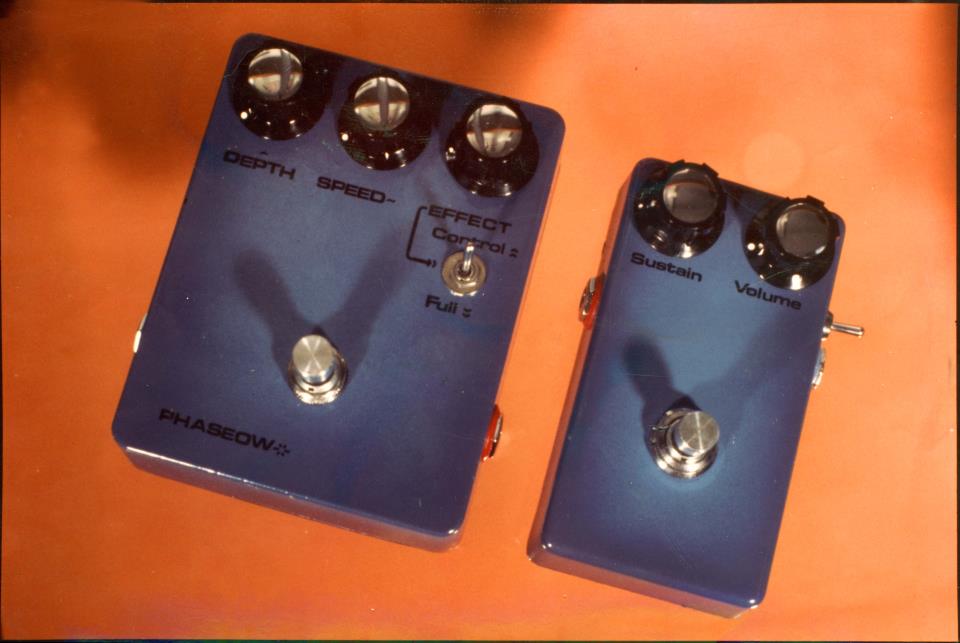
Kingfisher Music in Fleet (Colin and Cathy) asked me to leave the pedal I had just sprayed up with the sunburst blue and they would let people try it out and see if it would sell. That was on a Thursday morning (my day off) and on Monday next - Colin asked me how long would it take to make TEN! AND - could I make it look unique with some sort of logo and lettering. That's when I asked my friend John Martin - who worked at BBC TV News Graphics Dept - which was only 20 feet away from where I was working in TV Centre - IF they could advise me of a way of getting transfers done. He said his Dad knew how to do it and would do them for me. So I scribbled a drawing of the Smooth writing (Flower Power Style ![]() ) And the rest is History . John wouldn't tell me how much I owed him - but, being a guitarist - I offered him the first one that was done with the logo and transfers that his Dad had made for me. THAT Smooth was given to Andy Fenton - by John when he and his wife retired to France. Andy still has it!
) And the rest is History . John wouldn't tell me how much I owed him - but, being a guitarist - I offered him the first one that was done with the logo and transfers that his Dad had made for me. THAT Smooth was given to Andy Fenton - by John when he and his wife retired to France. Andy still has it!
c.1974/5 'SMOOTH' Sustainer by Precinct Electronics
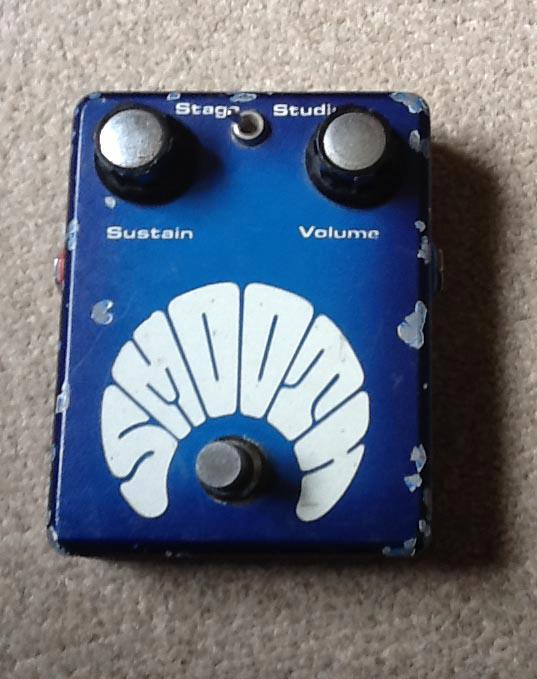
Andy Fenton's Smooth, the first made with the logo applied, previously owned byto John Martin.

Another example, photo shared by Colin Bowell
According to Colin at Kingfisher Music (they sold those 10 in a week!), Gordon Giltrap bought one of the first batch, and Brian May's roadie bought one 'to show Brian' - and it never came back - so one assumes he liked it. They sold over 50 of them in about 6 months - then I got too busy to make them.
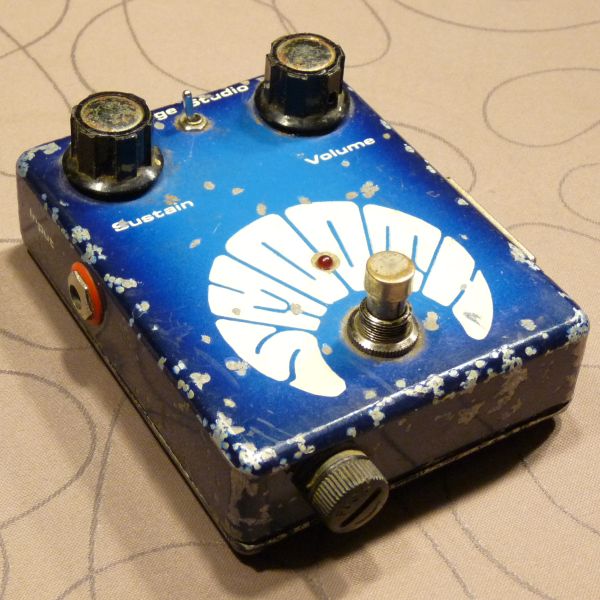
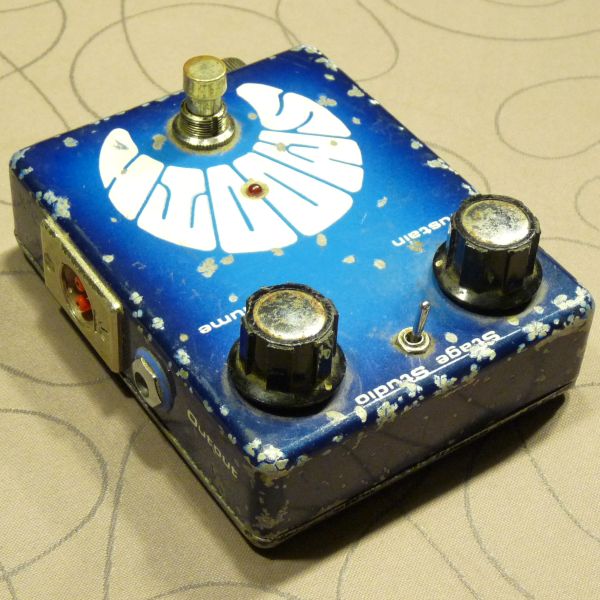
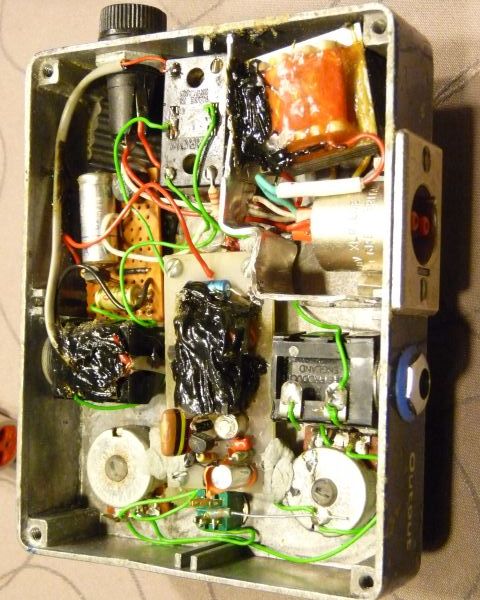
Wow... that Smooth is one that I actually remember building. Making the barrier for the transformer for safety. I only made 3 or 4 like that and they had the best sound when they had 24 volts from the power supply...some had 18...but they were still better than the battery powered ones.
You have a very special and rare one there! Look after it.
I can still service these pedals... but they shouldn't go wrong. The first one that I built is still being used today. I replaced the footswitch for the owner last year.
Fascinating to know they are still being used..as well as all the Bell Electrolabs stuff too"
Tony Koorlander quoted from:
https://www.effectsdatabase.com/model/precinct/smooth
TONY KOORLANDER'S PRECINCT RECREATIONS 1992
Howard Bone and I made about 10 then didn't we? I remember using the old 1975 wet slide transfers ![]() ... I tried this time (quoted in 2024), but they literally disintegrated as soon as I put any water near them - so have to do this rather nice but expensive alternative. That was 1992 - the LAST time I made any!
... I tried this time (quoted in 2024), but they literally disintegrated as soon as I put any water near them - so have to do this rather nice but expensive alternative. That was 1992 - the LAST time I made any!
TONY KOORLANDER'S PRECINCT RECREATIONS 2024
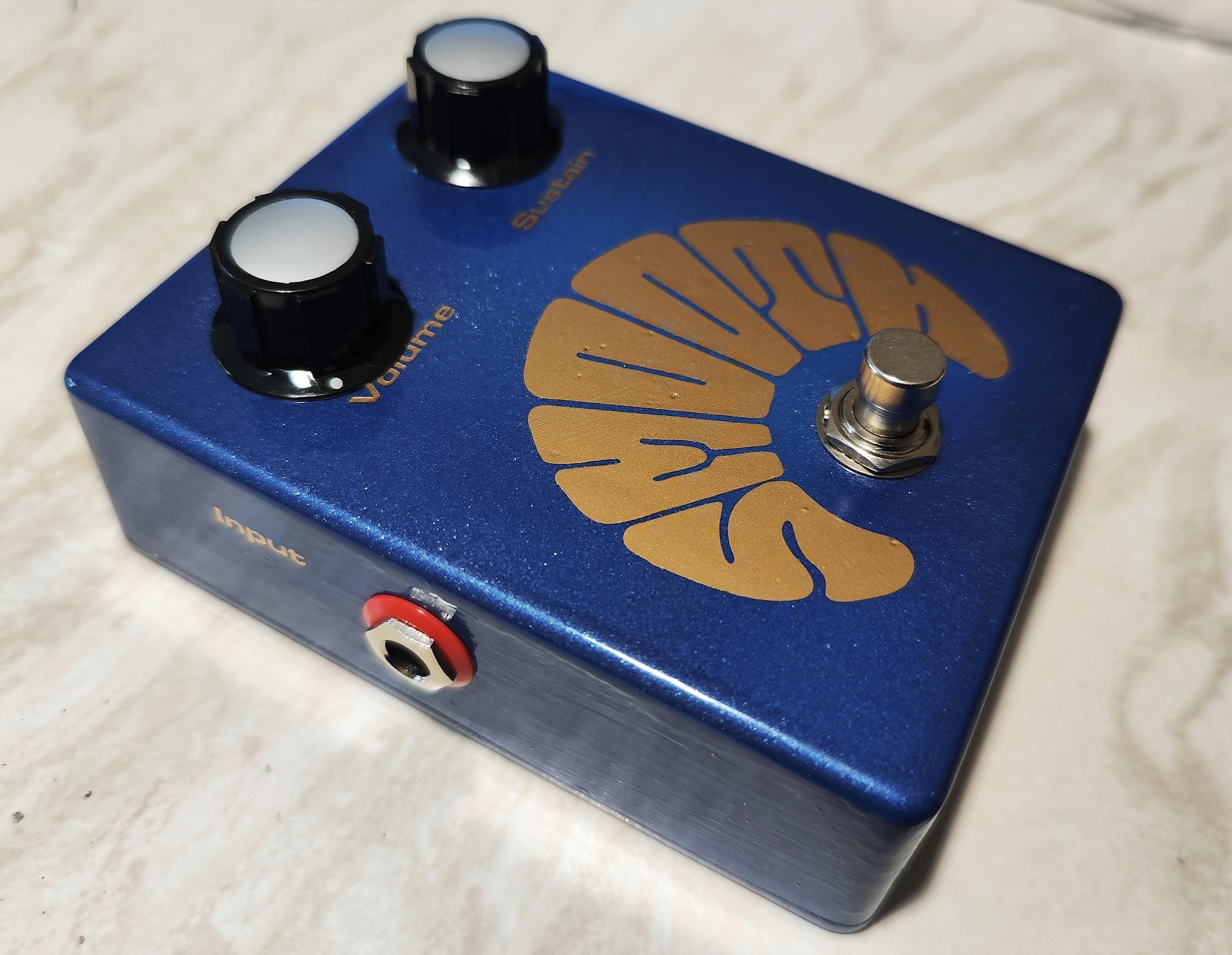
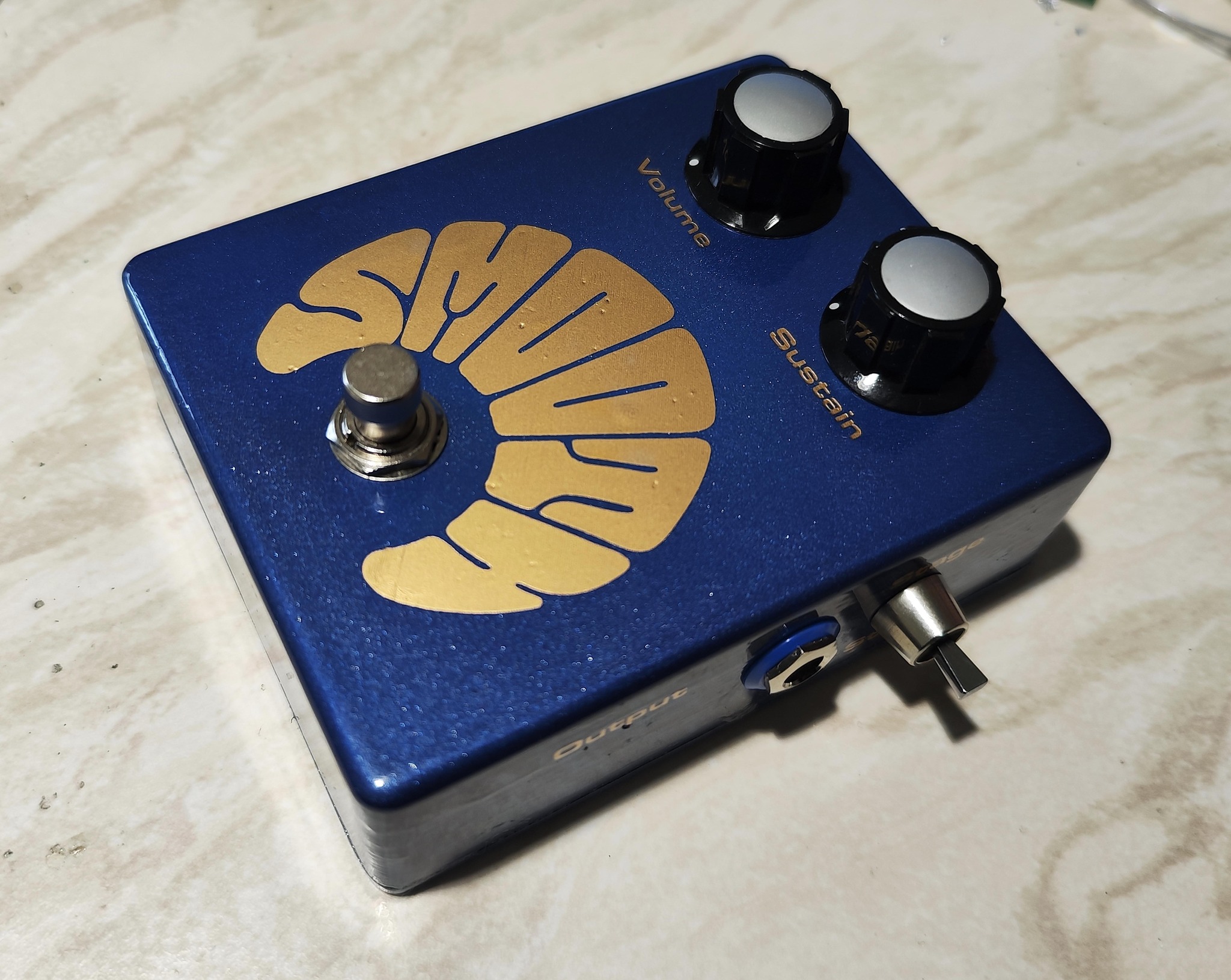
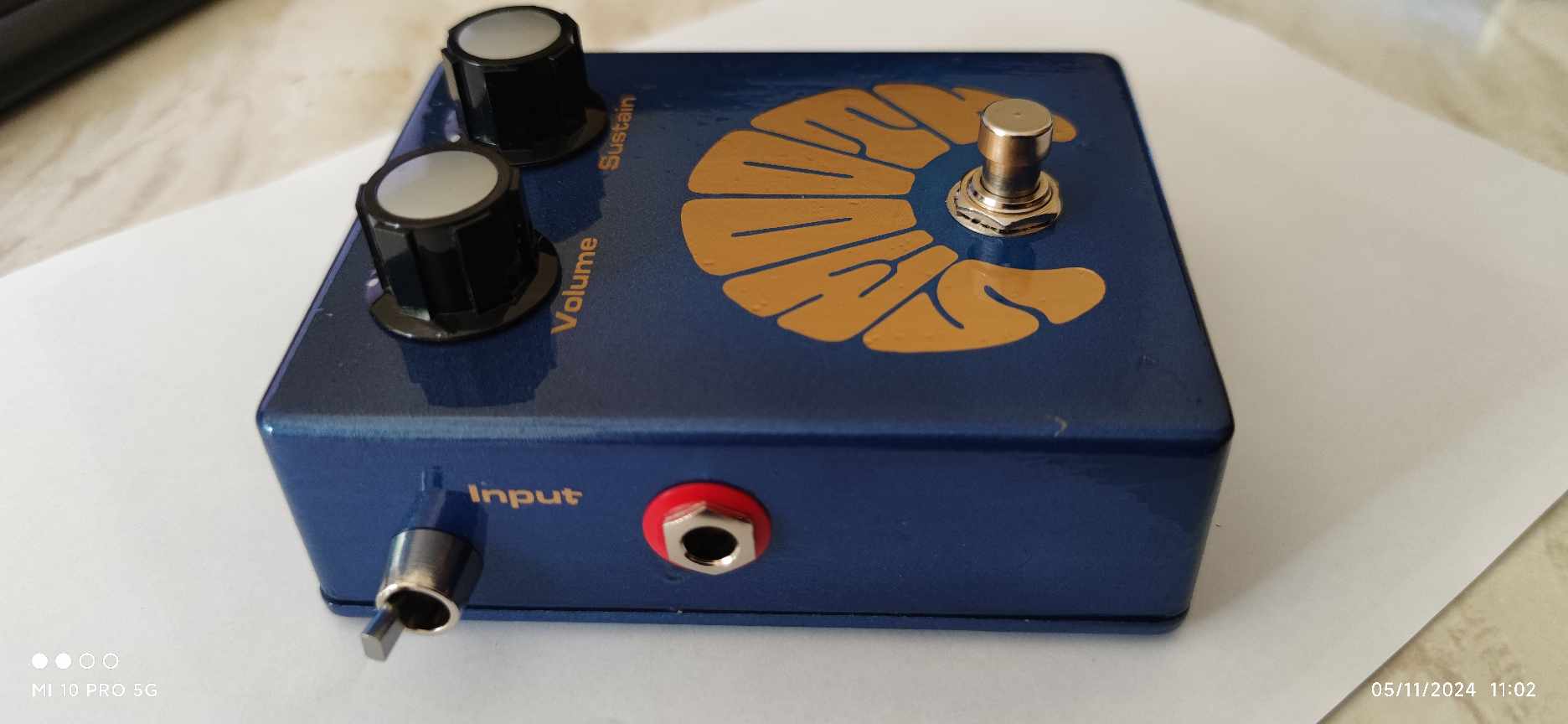
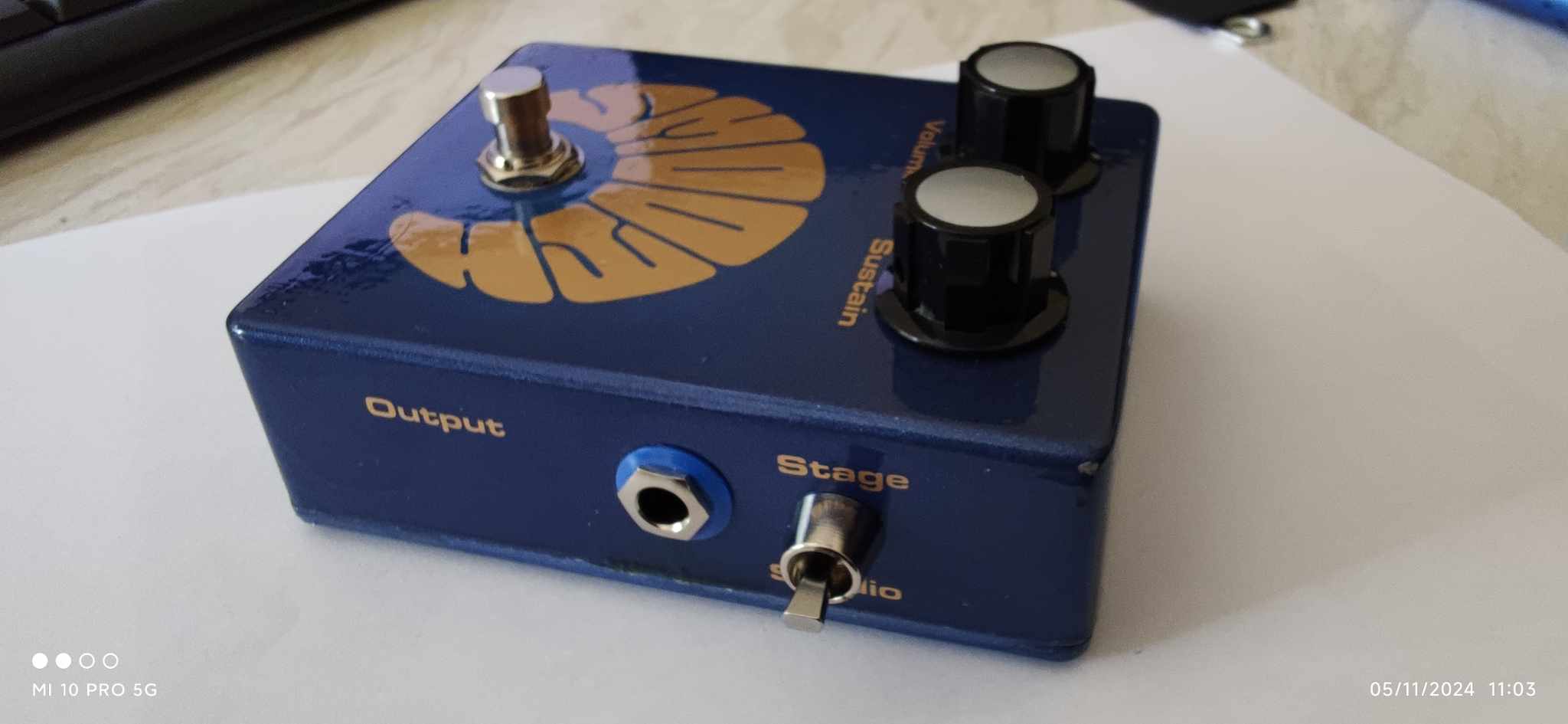
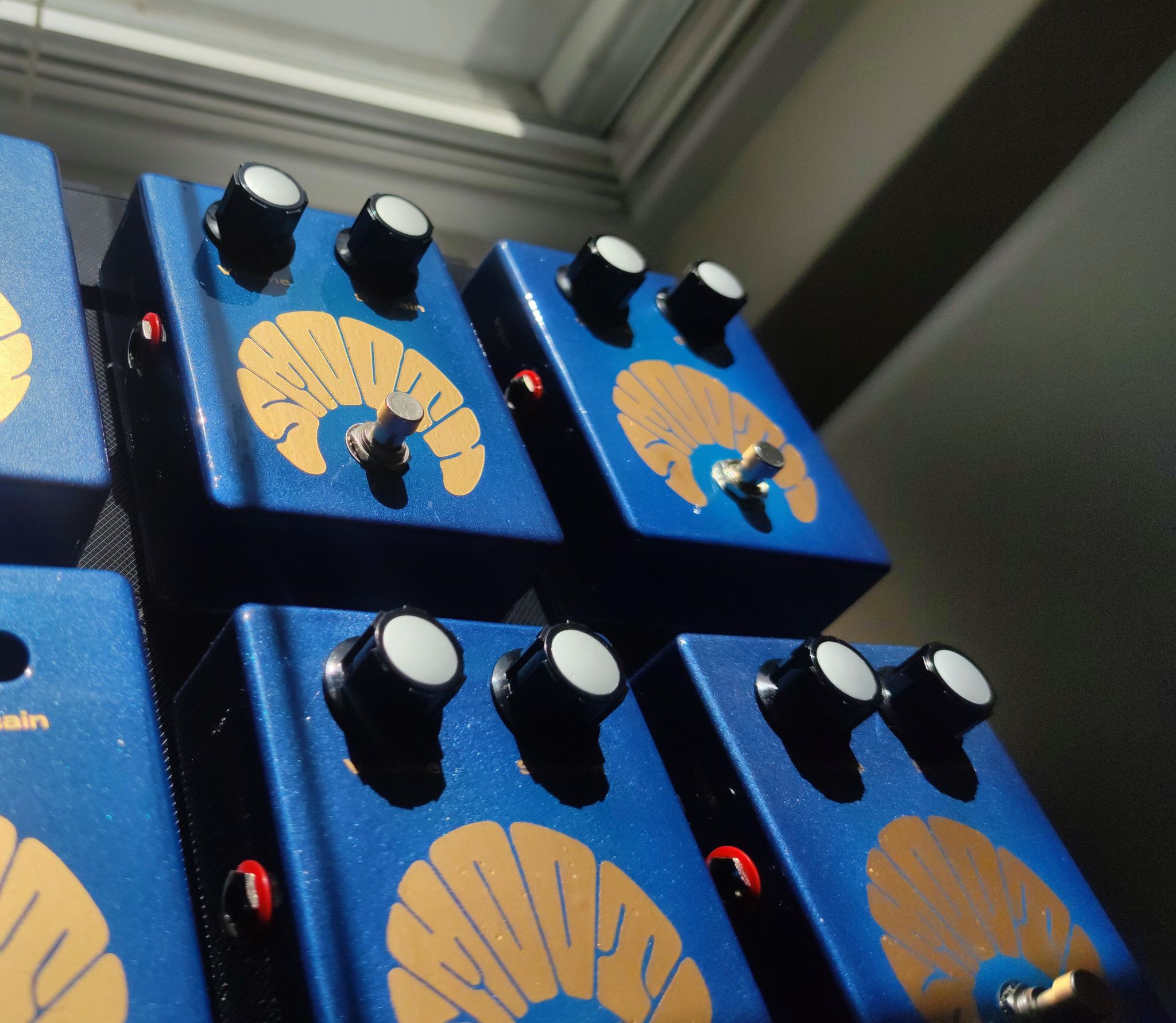
The 2024 version of SMOOTH has new ultra low noise components, and a dual TOP BOOST switch with centre position being the original smooth sustain.
Also available with a Blues/Rock switch to give the option of the original smooth dynamic or a slightly brighter distortion level.
How many have you made in this run?
Tony Koorlander: Ten this run. These are made using some new and expensive devices, which required some alterations BUT - being the designer - of course - I have actually been blown away by how quiet these are - even with Top Boost selected... which is awesome. This is grown up technology with grown up performance.
[but from now on it's] only to order - believe me - these take a lot of expensive components which were not expensive in 1971 (mind you - they were not as good either) and the GOLD labels cost a lot. I'm making each one myself, and it takes a bit of time to drill the boxes, paint them, fit the transfers, 3 coats of lacquer - then do the electronics and wiring of the controls and two feature toggle switches. I 'think' I might make a profit on the cost of parts, but by the time you add the labour etc... it is not enough to warrant doing without definite orders. I'm figuring out ways to alter this. Subbing out metalwork is not cheap - I got quoted £300 to drill out ten boxes! I have most of the parts for another 10... but there is not enough money in the bank to build them, let alone order the transfers! The first batch cost me more than I sold them for.
So, what's the third setting on the top boost switch? There's Smooth, Top Boost and... ?
Tony Koorlander: It's based on my 'imagineering' of what guitarists like Jeff Beck, Eric Clapton, and Brian May had in their 'secret kit' - so two levels of Top Boost each having a boost curve to match a particular sound, the centre position - is no boost - so exactly what the original pedal does. The Top Boost setting will also determine the character - it is REALLY good. The labels still say Stage and Studio - but they are for the two TOP Boost settings. MY top boost circuit is original - I have heard of the one you mention (Dallas Rangemaster) - but this is totally different in design as it is incorporated into a system compression curve that allows a wonderful enhancement of really clear top harmonics from the strings without clipping. UNIQUE. All of this is based on the original design concept from 1971, but due to having more development circuitry onboard - is capable of many nuances that could never have been done in 1971. The sustain level range is probably too much at the moment on one control - remember Stage was the 'normal' sustain, and 'Studio' was the OTT extension. In this box - I've used that name tag for the TOP Boost and tried to make the sustain a combination of the original studio. I now think it's too much with the TOP BOOSTs. People who don't understand how it is designed to work will overdo it and mess up the sound. It's a simple fix.
I'm usually a maximalist when it comes to settings, yet I've always found that the Bell Sustains were best used as an 'always on' boost with the sustain pot on 1/2 and the range set to the lower 'Stage' gain setting, yielding a very transparent boost with the treble transients well-preserved! But there are also great distortion tones to be had at more extreme settings!
Tony Koorlander: I think most people would find it easier to set up that way. I would add that the BLUES/ROCK switch wll compensate
And what does the blues/rock switch do?
It alters the threshold at which the compression kicks in. So allows a tad more raunchyness in the tone.
What's next for you?
Tony Koorlander: A new all-digital ADT unit with full stereo capability is in the design process at the moment. It will accomplish all that the old BBD ADTs did - but without the noise, distortion, and aliasing of the analogue design. Full 16-bit, up to 4 channel output same delay modulation as the old original Tony designed ADT. 4 independent delay paths. This will NOT be battery operated - as with the original ADT - there is a lot of hardware.
NOTE: Replacement transformer
